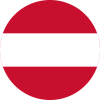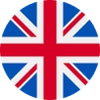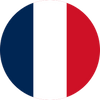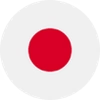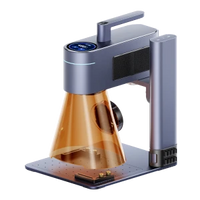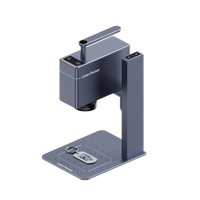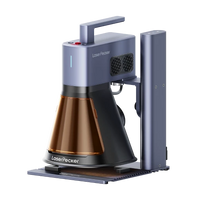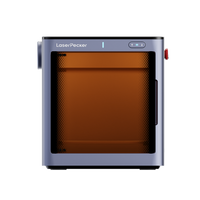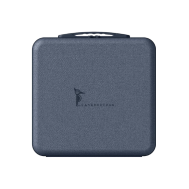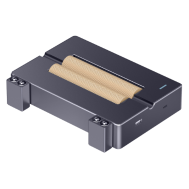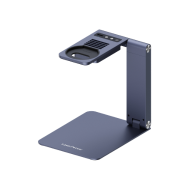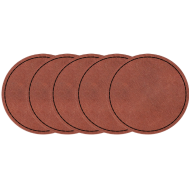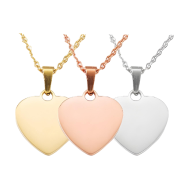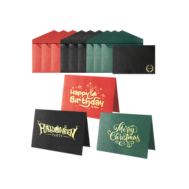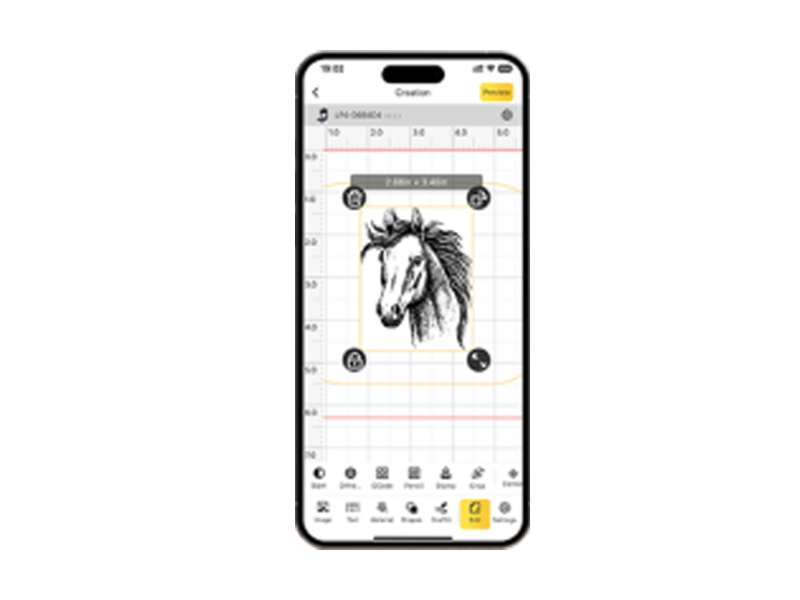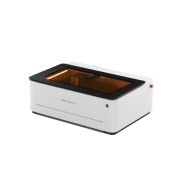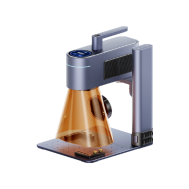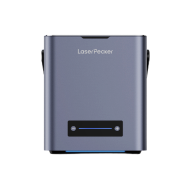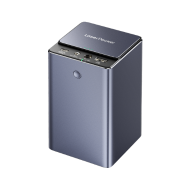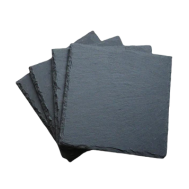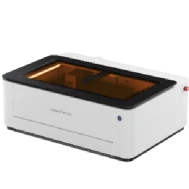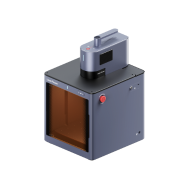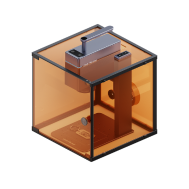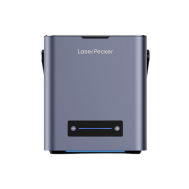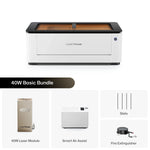



creativity in a swap
Process Almost All Materials


Second-to-none engraving speed at 1000mm/s-35% faster than any others.


Demand a Professional Setup.




Results Made Easy




**LX2 Bed Size: 560 x 470 mm (22" x 18.5")












Matrix


The LX2 offers three laser modules to meet the needs of different users: 20W 450nm, 40W 450nm, and 2W 1064nm.
LX2 can engrave materials with a maximum heigh of 45mm.
When used with the riser base(available for separate purchase), the maximum material height that can be engraved is 150mm.
Yes, the LX2 is equipped with a limit switch for each of its X, Y, and Z axes.
When the machine is powered on, it will perform a homing operation(left top corner) to ensure precise positioning.
The key features and highlights of the LaserPecker LX2 is
- High-Precision Camera Positioning;
- Smart Material Recognition & Auto ;
- Parameter Recommendation;
- Expanded Working Area;
- High-Speed Performance;
- Thicker Material Support;
- Batch Processing;
- Puzzle Generation Tool;
- Real-Time Monitoring;
The LX2 is a versatile laser engraving machine with an ultra-large engraving area, compliant with Class 1 laser product standards.It is designed for low entry barriers and ease of operation, supporting engraving on flat, cylindrical, and curved materials. It covers nearly all fields, from handmade creations to small-batch commercial production.
If you are a crafting enthusiast, gift customization business, or designer, the LX2 is the perfect choice.
The materials that LX2 can engrave depend on the laser module you have.
The 20W/40W 450nm laser module can engrave on Wood, Bamboo, Paper, Leather, Food, Fabric, Plastic, Opaque acylic, Opaque glass, Glazed ceramic, Stone, Silicon, 304 Stainless Steel, Anodized metal, and Coated metal..
The 2W 1064nm laser module can engrave on Gold, Silver, Copper, Platinum, Aluminum, Iron, and Most common metals.
The LX2 cannot directly engrave on transparent materials.
This is because the 450nm and 1064nm laser wavelengths it uses are not absorbed by transparent materials.
To engrave on transparent acrylic, you'll need to pre-treat the material by, for example, applying a coating.
The Rotary Extension processing requires the Riser Base accessory for use, with a maximum processable diameter of 130mm.
The LX2 offers three laser modules to meet different engraving and cutting needs:
20W 450nm:
This module is suitable for engraving a wide range of non-metallic materials, including bamboo, wood, leather, food, paper, fabric, photosensitive stamps, plastic, acrylic, colored glass, and glazed ceramics. If you need more detailed engraving results, the 20W module is the ideal choice.
40W 450nm:
Compared to the 20W module, the 40W version has stronger cutting power but a larger spot size. If your main goal is to cut thicker materials like wood or acrylic, the 40W is the better option.
2W 1064nm:
This laser module is specifically designed for engraving metal. Please note that it cannot be used for cutting metal.
The LX2's advantages include its fully enclosed Class 1 laser design, smart safety detection, and fire extinguishing function for high safety.
It offers strong expandability by supporting multiple laser module swaps and accessory compatibility, allowing for cylindrical engraving and an expanded engraving area.
With a high-precision camera and a distance sensor, you can easily position and place engraving elements, achieve one-click autofocus for a "what you see is what you get" experience, and easily handle curved surface engraving.
Additionally, a competitive speed of up to 1000mm/s and 40W laser modules deliver powerful performance.
Advantages of LX2:
1. The processing area of LX2 is 500*305mm(19.7*12 inch). If you need to process large objects, we recommend you use LX2;
2. The LX2 complies with Class 1 laser safety standards and includes numerous safety features to protect the user.
3. The LX2 is equipped with a camera module, making it easy to achieve accurate engraving and auto-focusing, and it can engrave on curved materials.
4. LX2 support installing a 40W 450nm laser, making it an excellent choice for cutting materials.
Disadvantages of LX2:
1. The engraving speed on some LP series machines is higher. For example, the LP4 can reach 4000mm/s, and the LP5 can reach 10000mm/s, while the LX2 has a speed of 1000mm/s.
2. LP series machines are handheld and portable, whereas the LX2 is a desktop machine.
Yes, the LX2 can expand its processing range by using a feeding accessory(available for separate purchase).
When paired with this accessory, the maximum processing area can be extended to 480 x 3000 mm (18.9 x 118.1 inches).
When cutting materials, placing the material on the cutting slats allows for more effective dissipation of heat and smoke generated during the cutting process. This reduces burn marks on the back of the material and ensures a clean, neat cut edge.
The LX2 supports two connection methods: USB cable and WiFi.
Before the first WiFi connection, you need to connect the machine with a USB cable to complete the network setup.
Yes, the machine can operate offline without the need for an internet connection.
The LX2 supports both LaserPecker Design Space and LightBurn software.
If you use the machine frequently or process materials that produce a lot of smoke, we recommend the following schedule:
Weekly cleaning:
The baseplate and laser protective mirror.
Monthly cleaning:
The exhaust fan, camera, and flame sensor.
For other usage scenarios, you can adjust the cleaning frequency based on your actual usage.
The LX2 comes fully assembled and has been thoroughly tested at the factory.
You just need to follow a few simple steps:
Install the laser head.
Install the exhaust pipe.
Connect the power.
Connect the software and place your material.Focus the laser module, select your material type to get recommended parameters.
Start your first engraving.
The entire process takes only a few minutes, making it easy for anyone to get started and quickly learn how to use it.
When the LX2 is in standby mode, the fan stops, and the noise level is very low.
During normal operation, the sound level does not exceed 70dB.
With long-term use, dust may accumulate on the protective lens, which can affect the laser module's output power.
You should regularly clean the protective lens to maintain proper engraving performance.
If the engraving results are still poor after cleaning, you may need to consider replacing the protective lens.
For materials that produce a lot of smoke when cut, we recommend checking and cleaning the protective lens once a week.



